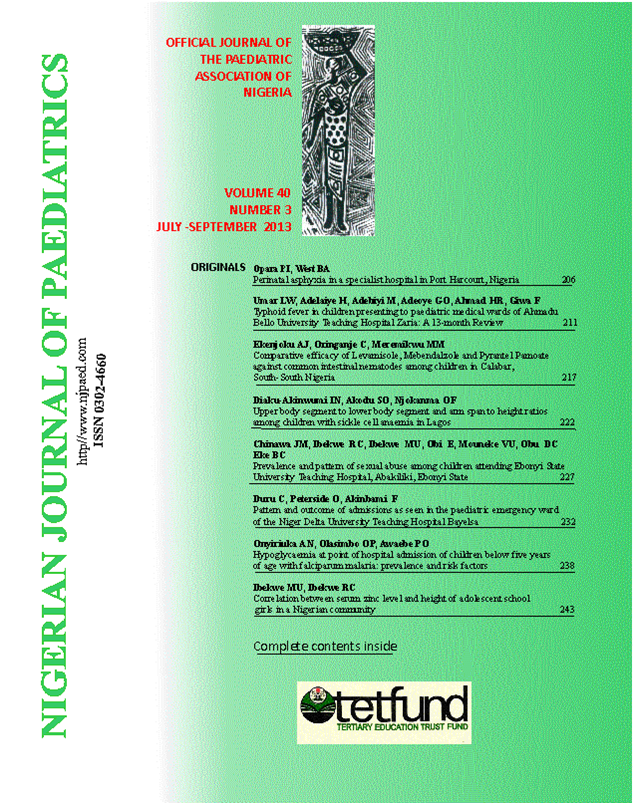Hypoglycaemia is a well recognized complication of falciparum malaria in children but its diagnosis may be overlooked because all the clinical features may be mimicked by other features of severe malaria. Objective: To determine the p
Abstract
Abstract Background: Hypoglycaemia is a well recognized complication of falciparum malaria in children but its diagnosis may be overlooked because all the clinical features may be mimicked by other features of severe malaria.
Objective: To determine the prevalence of hypoglycaemia at the point of hospital admission of under- fives with falciparum malaria and identify its risk factors in patients seen in a Nigerian secondary -healthcare institution.
Methods: At the point of admission, venous blood sample was collected into an appropriate sample bottle (fluoride-oxalate bottle)
from 502 children who were below 5 years of age for malaria parasite examination (Giemsa stain). The blood sample was analysed using the glucose-oxidase method.
Results: Ninety two (18.3%) of 502 children below five years of age with falciparum malaria had hypoglycaemia (blood glucose
below 2.6 mmol/L) at the point of hospital admission. Twenty three percent, 78 of 339 children below 36 months of age were hypoglycaemic compared to 8.6%, 14 of 163 children aged 36 months and above; p<0.01. Forty (13.1%) of 305 children in whom the time of last meal was 12 hours and below had hypoglycaemia compared to 52 (26.4%) of 197 in whom the time of last meal was greater than 12 hours; p<0.05. The duration of illness and the parasite density did not have significant bearing with the prevalence of hypoglycaemia.
Conclusion: Age below 36 months and a time of last meal greater than 12 hours have significant bearing with occurrence of hypoglycaemia in children with falciparum malaria. Routine monitoring of blood glucose at point of hospital admission is suggested.
Keywords: Hypoglycaemia, falciparum malaria, prevalence, risk factors, under-fives.
Downloads
Published
Issue
Section
License
This is an open-access journal, and articles are distributed under the terms of the Creative Commons Attribution 4.0 License, which allows others to remix, transform, and build upon the work even, commercially, as long as appropriate credit is given to the author, and the new creations are licensed under identical terms

